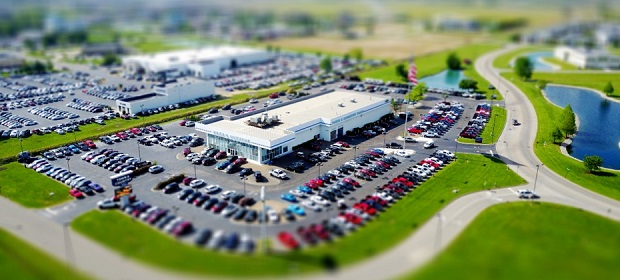 After two consecutive emergency meetings in March and numerous stimulus announcements, the Federal Open Market Committee (FOMC) finally got back on track and wrapped up their standard two-day meeting on April 29th. While Fed officials did not make any changes to the federal funds rate – which is currently sitting near zero – or to the level of purchases of treasuries and mortgage-backed securities, they did provide a glimpse into how long rates are likely to remain at their current levels.
After two consecutive emergency meetings in March and numerous stimulus announcements, the Federal Open Market Committee (FOMC) finally got back on track and wrapped up their standard two-day meeting on April 29th. While Fed officials did not make any changes to the federal funds rate – which is currently sitting near zero – or to the level of purchases of treasuries and mortgage-backed securities, they did provide a glimpse into how long rates are likely to remain at their current levels.
Hint: It is going to be a while.
Understanding the Fed’s statement
In order to get a clearer picture of what the Fed is thinking, skip the headlines and go straight to the source – the post-meeting press release.
Here is the most important paragraph from their statement (with the key components underlined):
“The ongoing public health crisis will weigh heavily on economic activity, employment, and inflation in the near term, and poses considerable risks to the economic outlook over the medium term. In light of these developments, the Committee decided to maintain the target range for the federal funds rate at 0 to 1/4 percent. The Committee expects to maintain this target range until it is confident that the economy has weathered recent events and is on track to achieve its maximum employment and price stability goals.”
Just by taking the statement at face value, it is clear the Fed is going to keep rates where they are for some time, but for how long? That depends on how the key phrases are interpreted.
The first, “over the medium term”, seems simple but requires some detective work. What does “medium term” mean? In the post-meeting press conference, the Fed Chairman was asked this question and he alluded that it likely means a year or more.
So, there is part 1 – the Fed expects to keep rates near zero for at least a year. That is not all that surprising, but it does provide a floor: a minimum timeframe.
Key phrase 2, however, requires a bit more effort but is where the real story lives.
The dual mandate is no longer a balancing act
“The Committee expects to maintain this target range until it is confident that the economy has weathered recent events and is on track to achieve its maximum employment and price stability goals.”
There is a lot of economics in that sentence.
The Fed has been mandated by Congress to achieve two primary goals – maximum employment and price stability (inflation near 2%). These two goals, or the “dual mandate” as they are often referred to, seem simple but have historically been at odds. The thinking went that if the Fed kept interest rates low to support employment, then inflation would rise. And if the Fed increased interest rates to control inflation, then employment would decline. A delicate balance – at least it was thought.
Somewhere in the last couple of years Fed officials have realized that even after a decade of near-zero interest rates following the financial crisis and very-low levels of unemployment, inflation has remained persistently below their 2% target. Something has broken in the relationship.
This is key, because it means that the Fed now feels free to keep interest rates exceptionally low in order to get employment back on track, without having to worry about inflation; and may in fact need to keep rates lower for longer in order to boost inflation. Both sides of the dual mandate now appear to require low rates.
Chasing “maximum employment”
With inflation no longer a priority for Fed officials at the moment, their sights are set squarely on achieving the maximum employment portion of the mandate. But what does it mean to achieve “maximum employment”? Well, it is an elusive target, but in general, it is the point at which rising wages leads to higher inflation – the result of businesses increasing pay to compete for a shrinking supply of workers.
What is known is that even when the unemployment rate was at a 50-year low of 3.5% in early 2020, wages were not rising much. Which indicates that the economy may have been near maximum employment but was not quite there yet.
So, to achieve maximum employment, unemployment needs to be somewhere near 3.5% and that could take some time, a long time.
Current range estimates show the unemployment rate rising to anywhere between 12 – 30% in the coming months. And a recent report out of the Congressional Budget Office projected that unemployment will still be around 9.5% at the end of 2021.
The last time the unemployment rate was at 9.5% was right after the financial crisis, and from that point it took nearly a decade for the rate to fall to 3.5%. And while it is not expected that the current crisis will be as prolonged as the previous one, it still provides a reference point as to how long it can take to recover job losses.
So how long does the Fed expect to keep rates near zero? One year at the very minimum, easily two years, and perhaps up to a decade.


